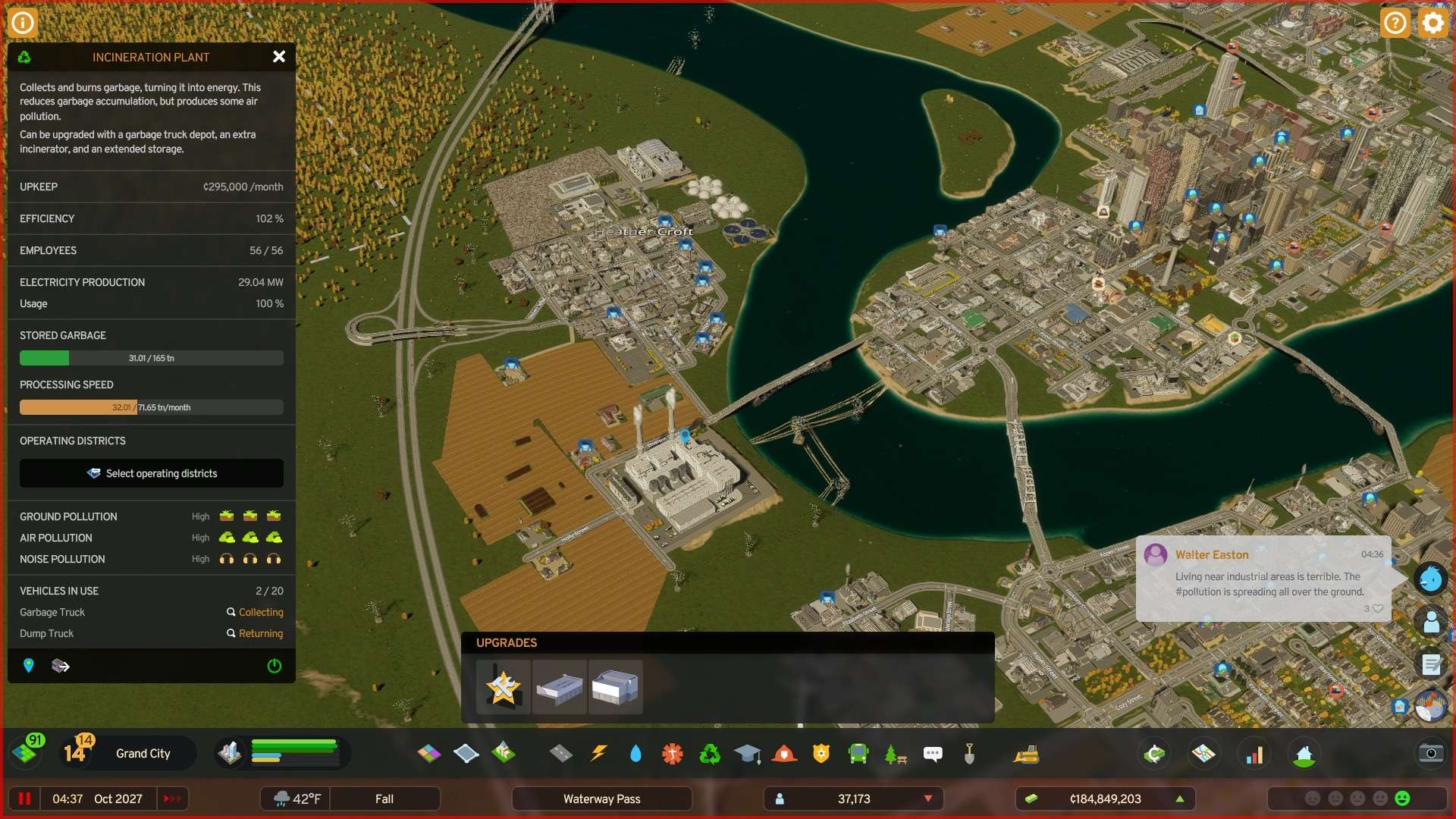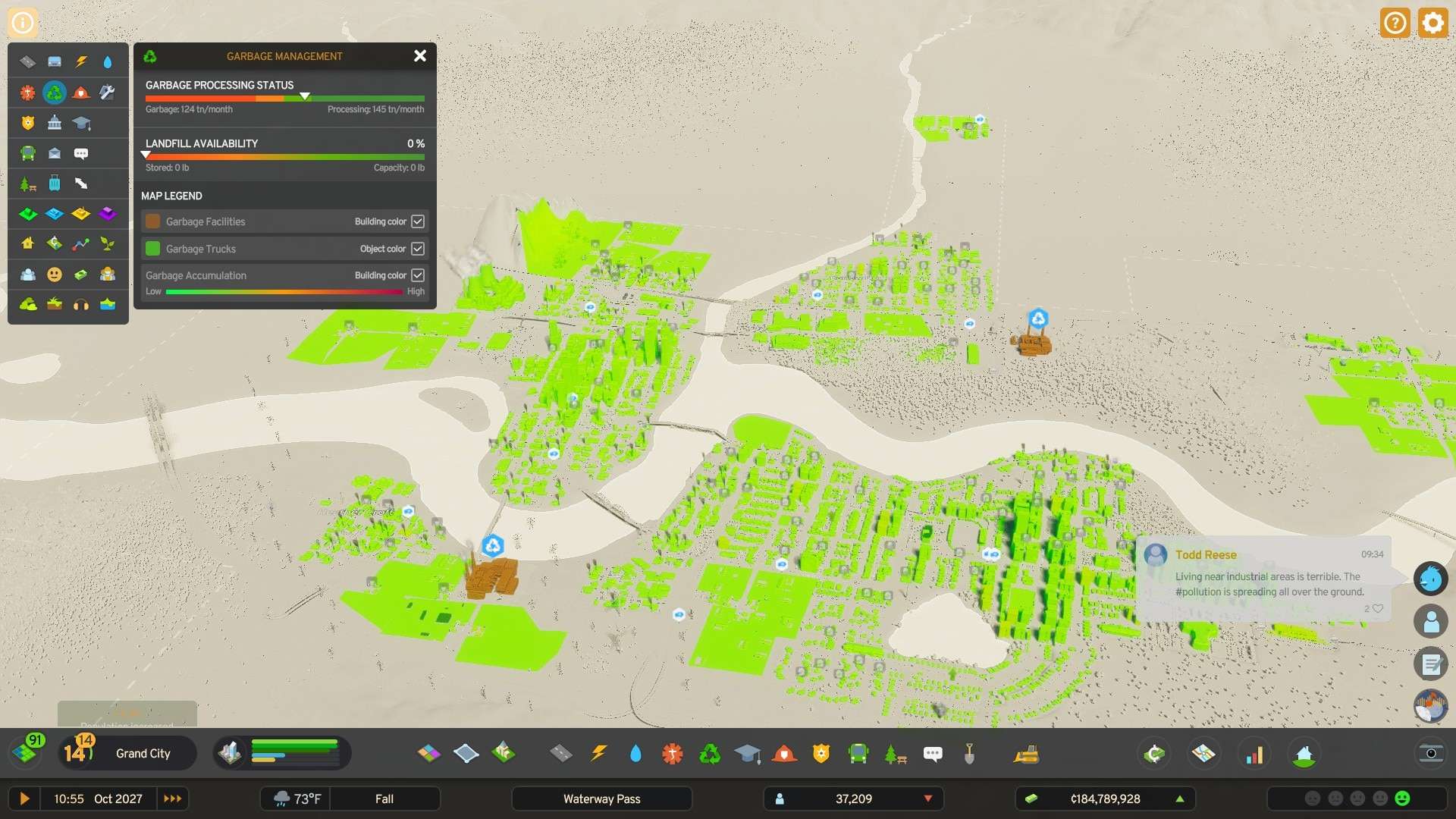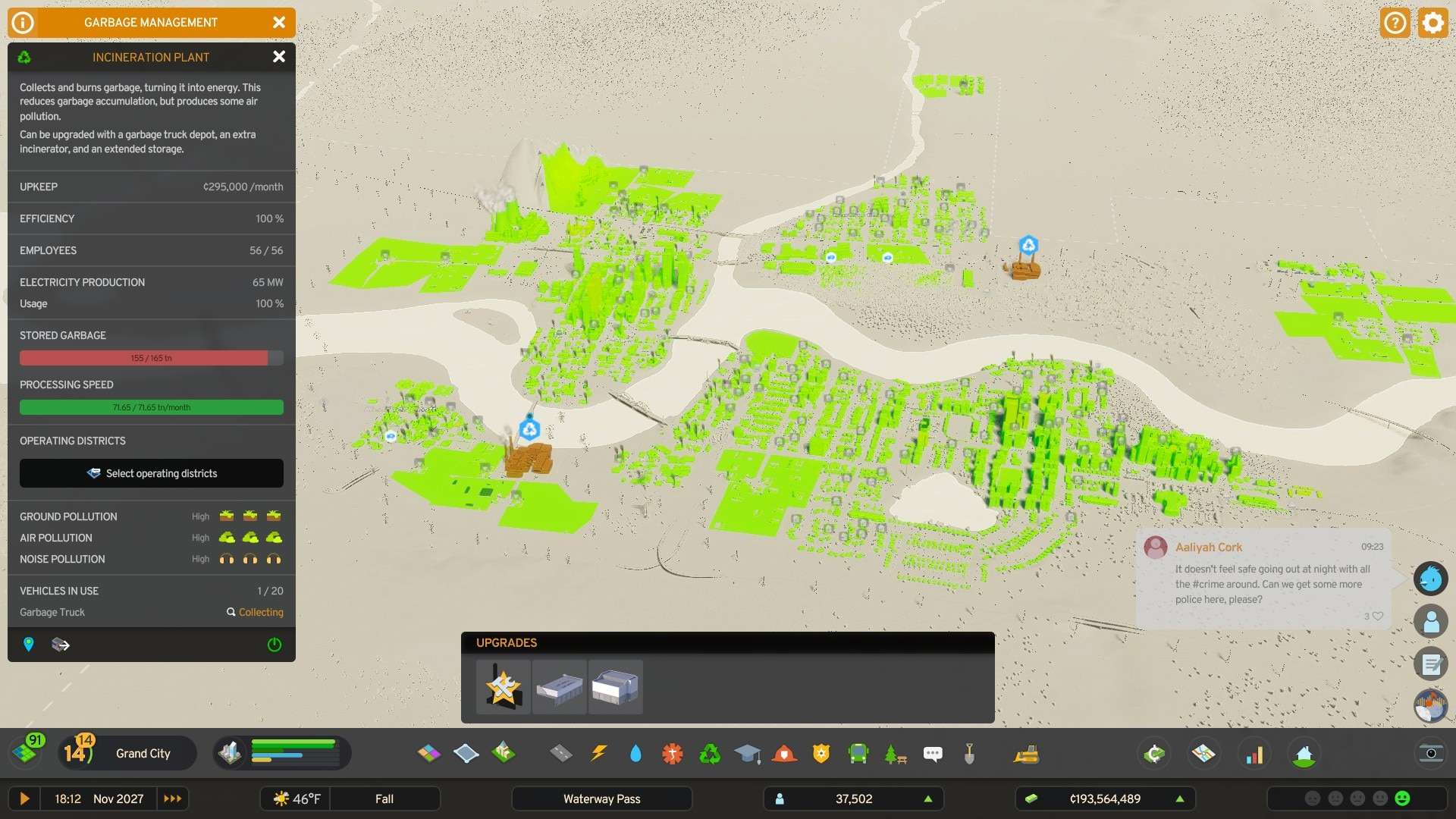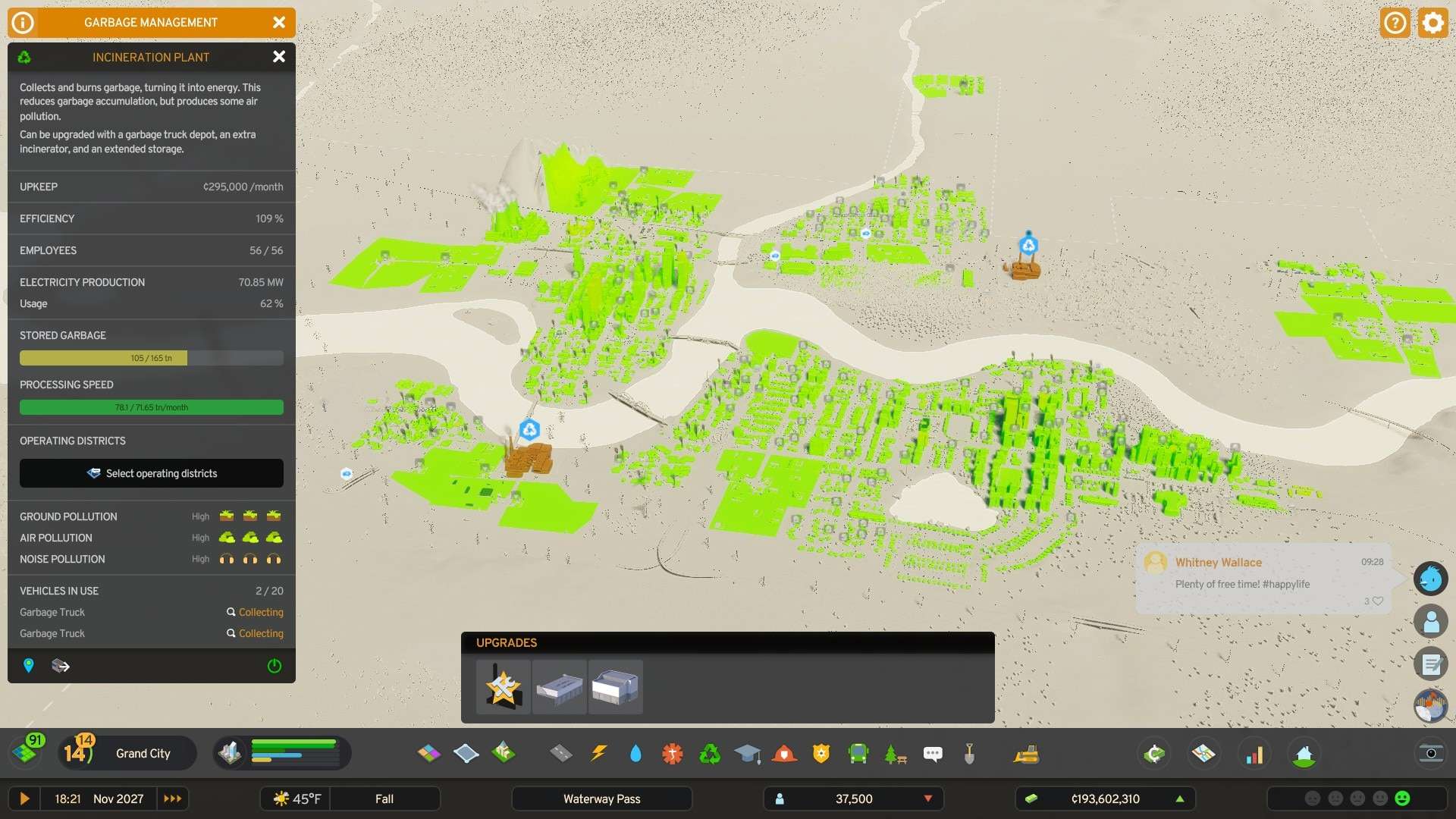How to manage your city’s garbage so it doesn’t flood your city despite having what appears to be sufficient processing capacity.
An Overview – Garbage Facilities and Their Costs and Why You Need Them All
There are 3 different types of garbage in the game and I will explain why I think this from looking at numbers and why I think you are supposed to have a mix of processing for all 3.
The 3 types are:
- Recyclables
- Non-Recyclabes.
- Industrial Waste
Now looking at the costs to maintain these facilities and their processing speeds:
Landfill:
- $30,000 monthly cost
- Processes 0.6 tons per month
- $50,000 to process 1 ton of garbage.
- Hazardous waste extension:
- $30,000 per month
- Processes 1.1 tons per month
- $27,272.73 to process 1 ton of garbage.
Recycling Plant:
- $160,000 monthly cost
- Processes 11 tons per month
- $14,545.45 per ton of garbage processed
- Hazardous waste extension:
- $40,000 per month
- Processes 1.1 tons per month
- $36,363.64 per ton of garbage processed.
Incinerator(without the processing speed extension):
- $210,000 monthly cost
- 41.1 tons per month processing speed
- $5,109.49 per ton of garbage processed.
Industrial Waste Processing Site(and you can only build one):
- $450,000 per month
- 55.1 tons per month processing speed
- $8,166.97 per ton of garbage processed
If we are to assume that all garbage is just garbage and can be processed by any facility, it makes no financial sense to use anything other an an incinerator to process your garbage and you should NEVER build the processing extensions for landfills and recycling plants because of how expensive the processing cost is per ton.
Why would you ever build an extension to a recycling plant that costs more than double to process garbage?
The only conclusion that makes sense to me is that there are different types of garbage.
It makes sense to build the industrial waste processor to handle industrial waste at a cost of $8,166.97 vs $36,363.64 per ton.
Now the 2nd part which is throwing everyone off is the perception that the processing rate listed for facilities is wrong or the rate of processing is off.
I think the current processing rate showing when you have a building selected is what it SHOULD be if all of the garbage in the facility was of the correct type. The actual rate it is processing is based off of what you actually have in storage at the facility.
Now all garbage facilities act like warehouses for one another and they redistribute the garbage between themselves with dump trucks to balance out storage percentages. When they do this, they don’t distinguish between garbage types. Each building does its own sorting as it processes and what it can’t process stays in storage.
Now investing in storage extensions makes sense. If all garbage was the same, then you want your garbage facilities to be near full to maximize the processing speed so you get the most value out of the facility. Storage extensions work against this.
If however all garbage is not the same and having too little storage could cause processing speeds to slow down and garbage facilities to become full of stuff they can’t process, now it makes sense to invest in storage.
This even makes the argument for having landfills. The landfill can process all 3 types but very slowly and very expensively and it’s mainly for storage.
To put this into perspective for the folks drowning in garbage. Imagine if every one of your waste management facilities was like the post sorting facility but its entire storage was full of global mail and it had no space to receive unsorted mail and nowhere to put processed local mail.
The Test to Prove It
The city has a garbage network of 2 landfills, 2 recyclers, 1 incinerator, and 1 industrial waste processor for a population of 37k.
It has been this way for a long time without change. This is my test city for figuring out the simulation.
This is the incinerator in the city which we will refer to as Incinerator 1.

Incinerator 1’s storage capacity always stays around 20% and occasionally sends out dump trucks to grab garbage from the recyclers. You can see a landfill and the industrial waste processor a little bit behind it.
This is now the test setup: Everything else besides incinerator 1 was removed and Incinerator 2 is added on the right. Total garbage processing capacity exceeds total accumulation.
If I put the incinerators right next to each other, outside garbage collectors start coming in for the far side of the city and we don’t want that for this test. All other waste management facilities were removed.

I let the simulation run for only ONE MONTH.
Here is Incinerator 1:
It is just about full. I expected it to fill up first as it has much more industry around it(more industrial waste) and is closer to downtown.

Here is Incinerator 2:
It is well on its way to getting full. I made one observation, as incinerator 1 was filling up. Incinerator 2 did not send any dump trucks to relieve the storage load. Could this be because Incinerator 1 did not have any extra burnable garbage in storage for incinerator 2 or could it just simply be because it already had its garbage collectors out and was reserving space?

It was then at this point I stopped the test because these started showing up:
Garbage trucks from other cities, for the areas around incinerator 1.

In conclusion, this evidence supports my theory that there are different garbage types in this game and you need a mix of facility types and ample extra storage space to process everything.


